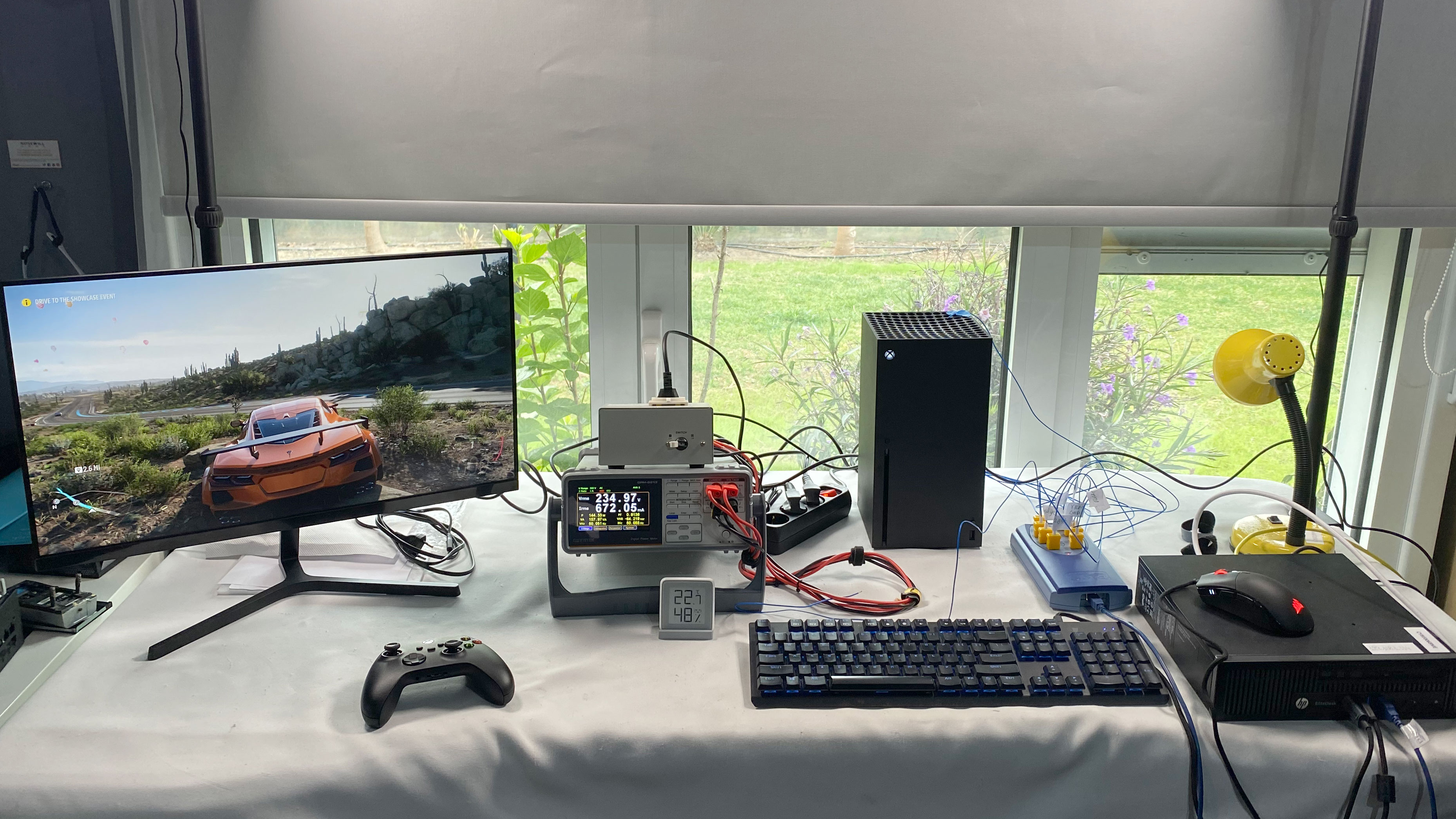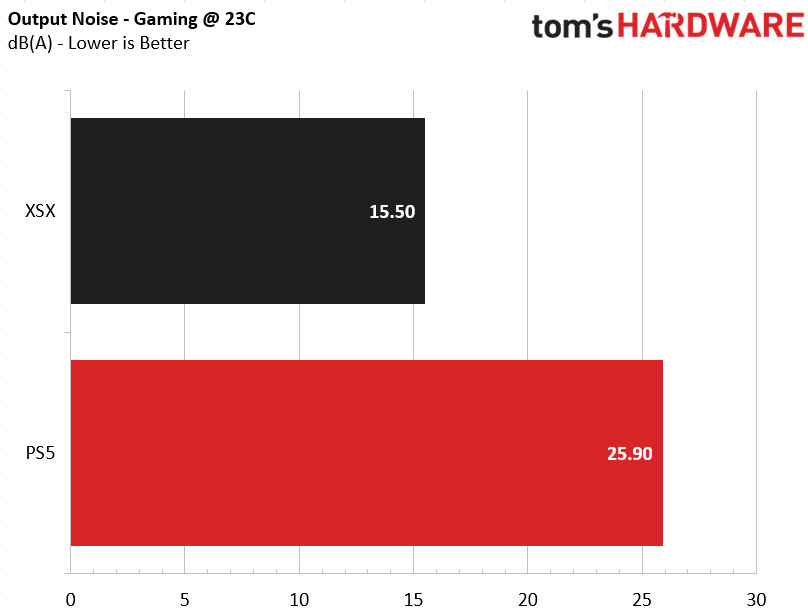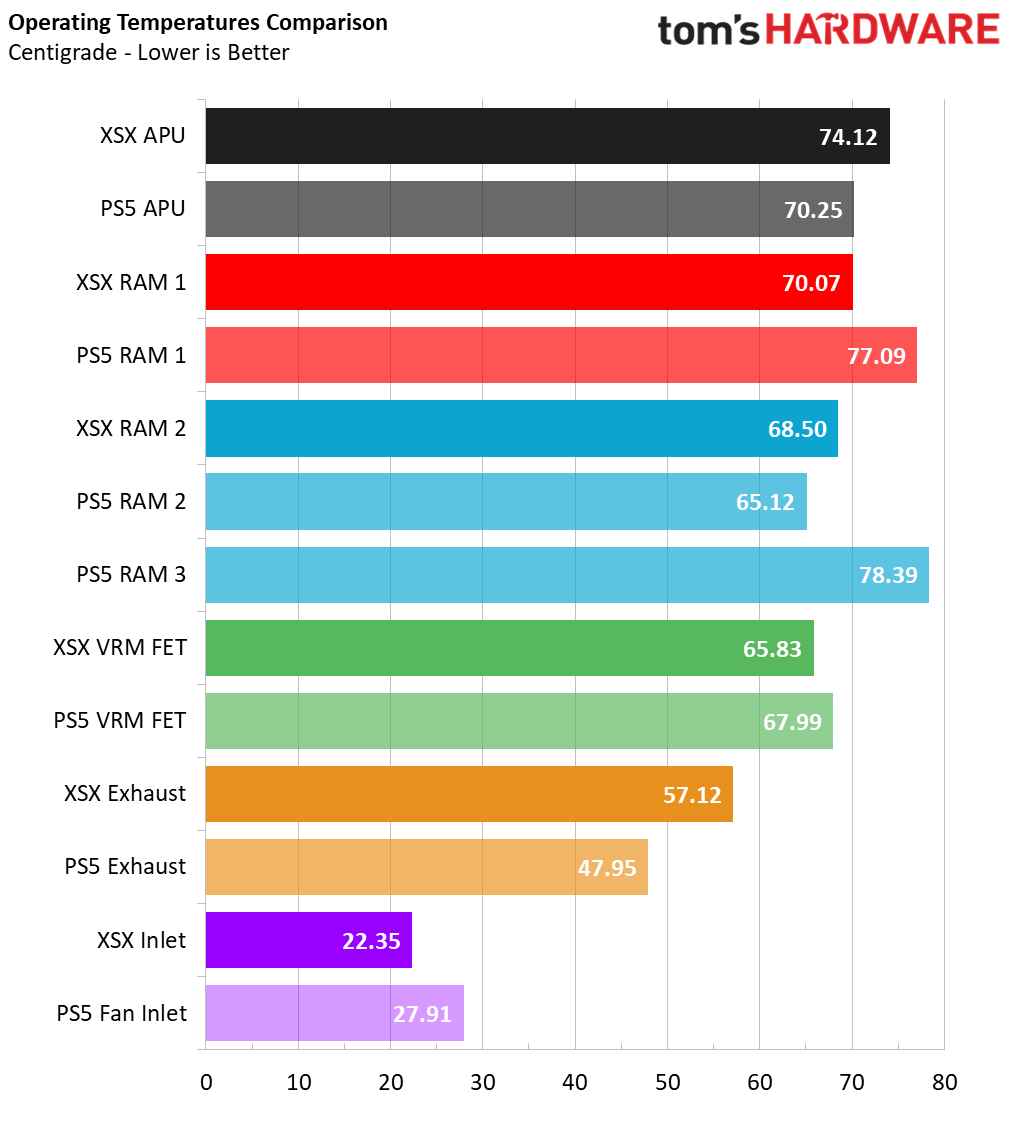Xbox Series X vs PS5: Which Console Stays Coolest
Once everything was set, we used a Picoscope temperature logger to keep track of all temperatures. We also connected a GW-Instek power analyzer (GPM-8213) to check the power that the Xbox draws from the wall. At first, we used an HD monitor, but we decided later to go with a 4K one since most users will use high-resolution monitors.
Since we have Game Pass Ultimate, we downloaded several demanding games to stress the console’s hardware. But before referring to the operating temperatures, let’s check first average and peak power consumption in three games. We will also include PS5 power measurements to check which console is more power-hungry.
During our XSX test sessions, the ambient temperature was 22-23 degrees Celsius, while in the PS5 measurements, the ambient was 27.9 degrees Celsius.
Power Measurements
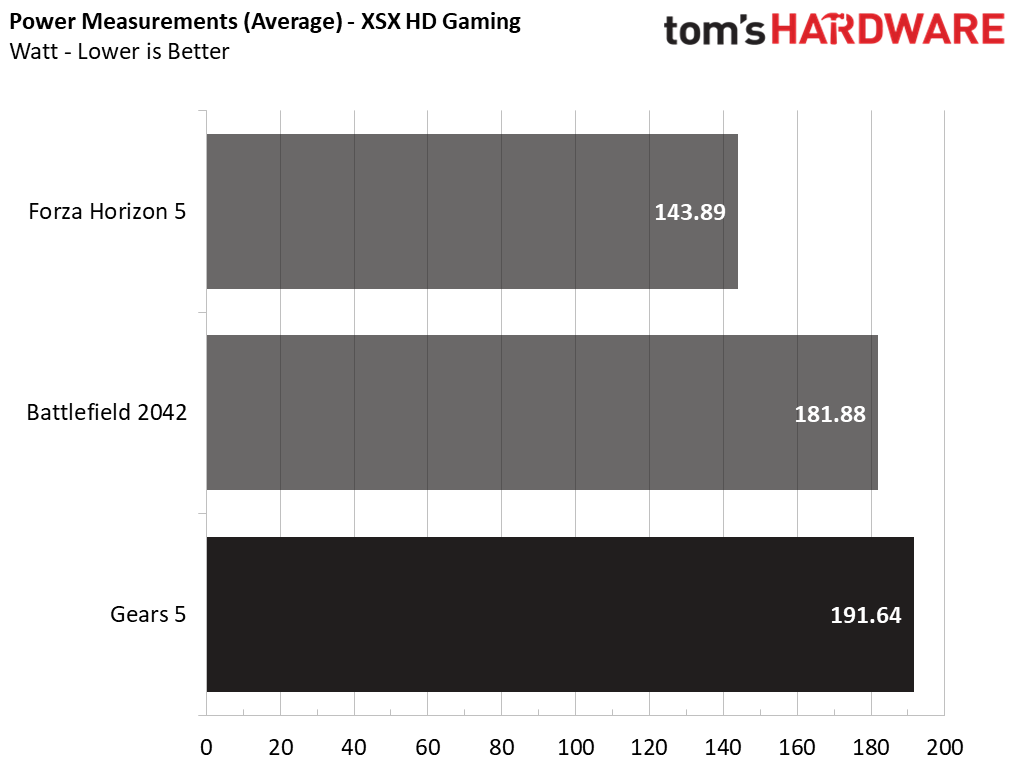
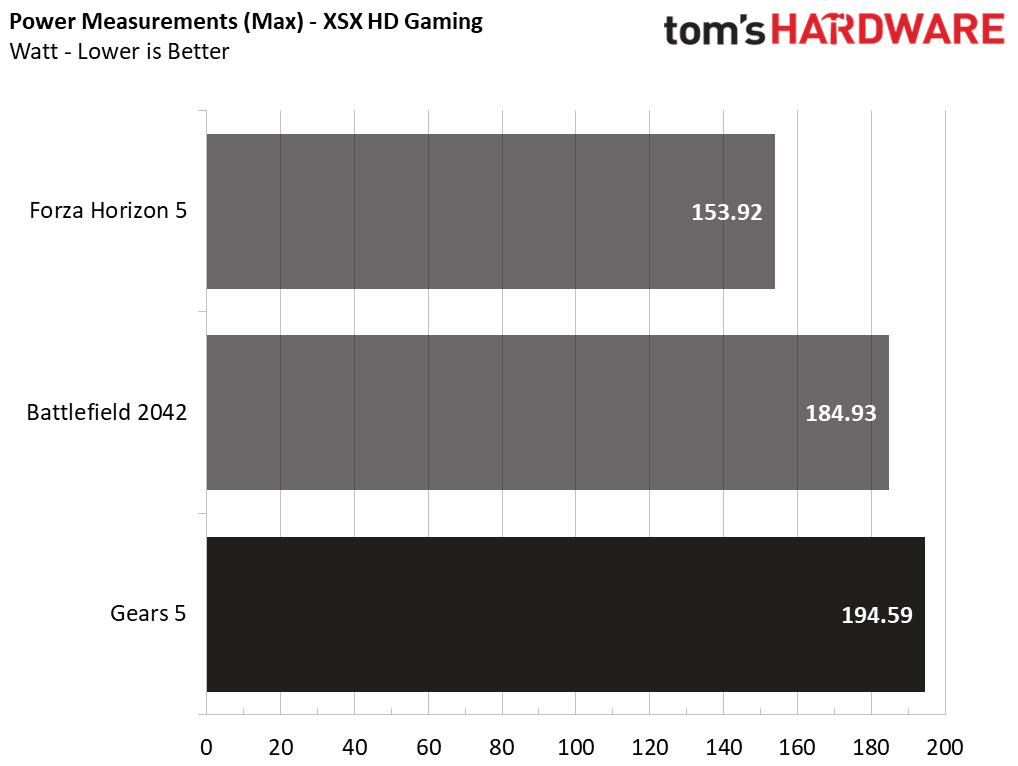
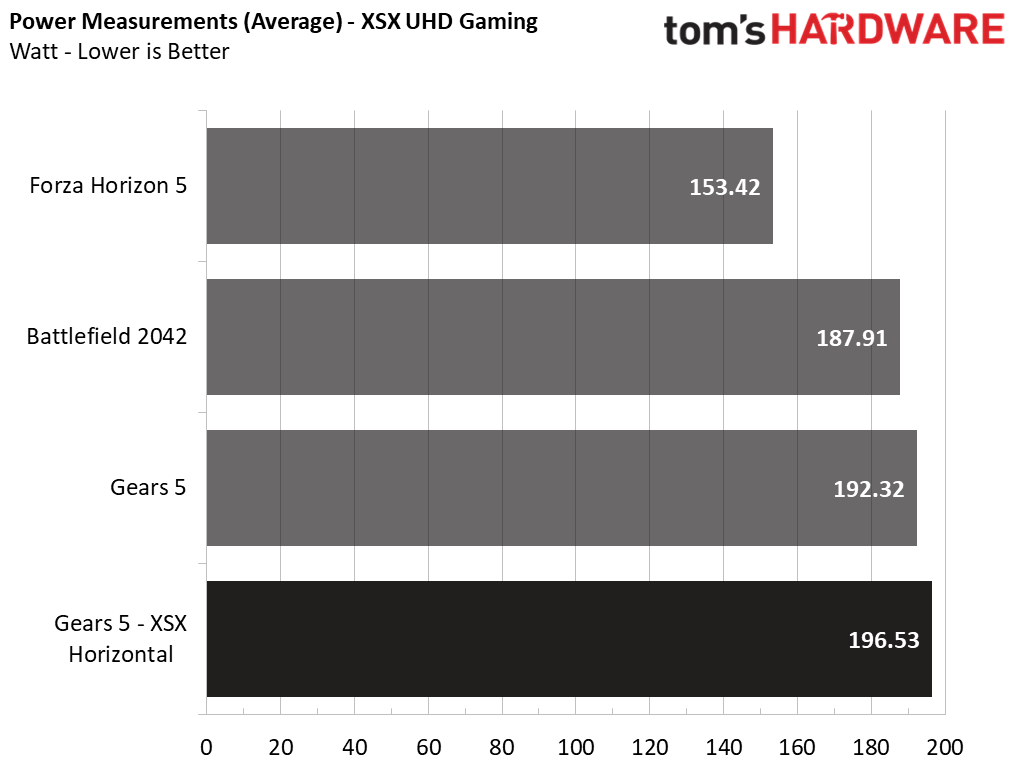
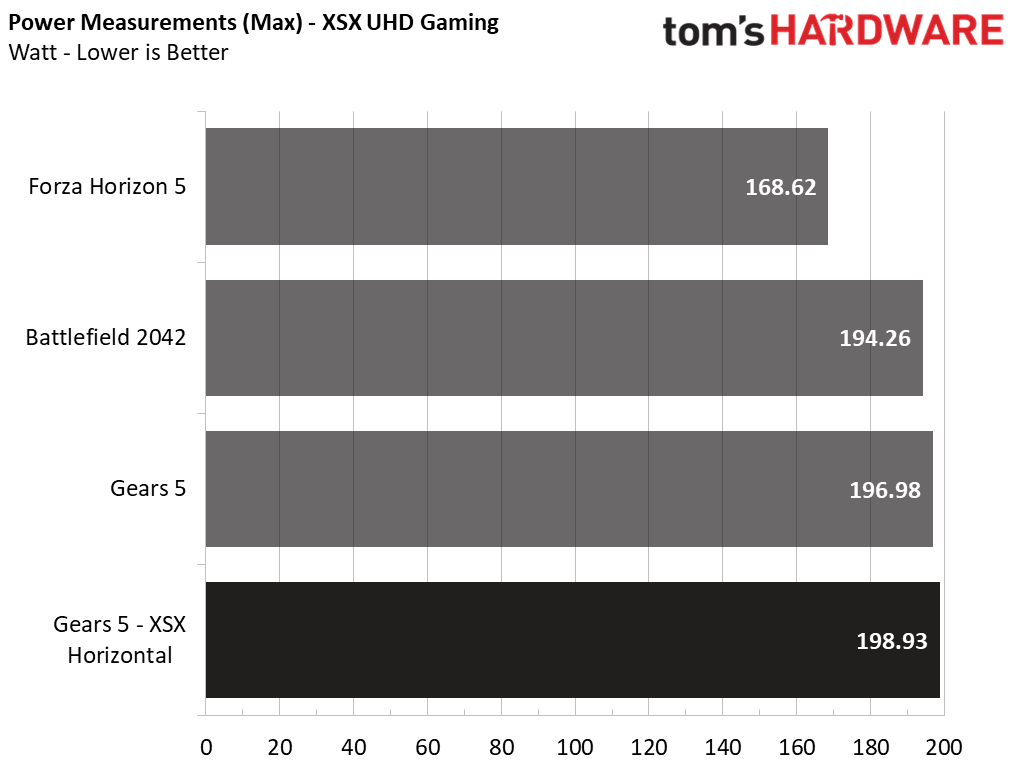
The most demanding game we tried on the XSX is Gears 5, while Forza Horizon 5 is less power-hungry, despite the fantastic graphics. Battlefield 2042 is a bit less demanding in energy than Gears 5. Finally, UHD gaming needs more power since it pushes the console more. For the PS5, we used Devil May Cry 5, which kept power consumption at high levels without any notable deviations.
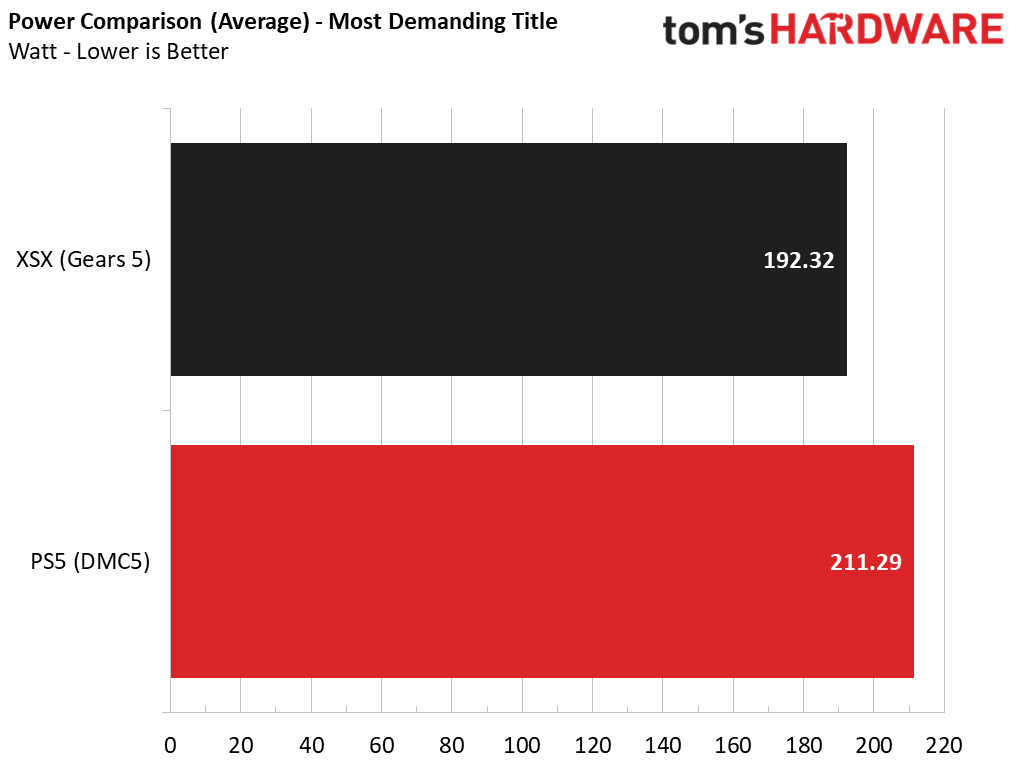
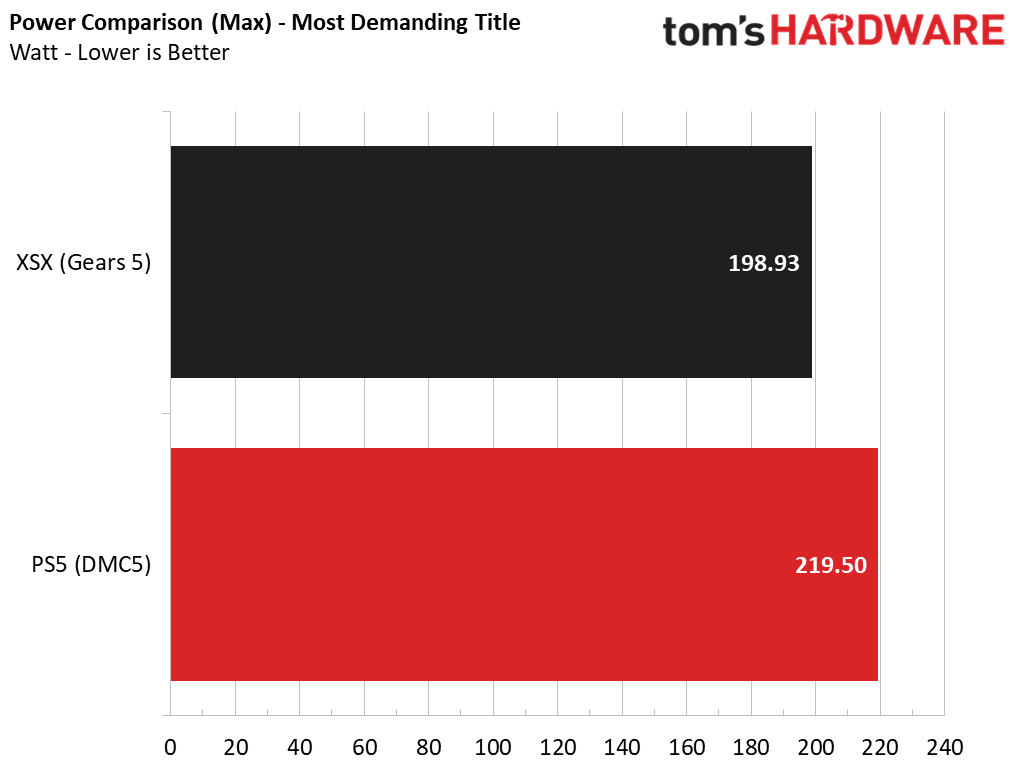
The results are not 100% comparable since we are talking about different games, but we take the peak HD and UHD gaming readings we got after hours of testing to give you an idea of how much energy each console needs.
The Xbox is less demanding, consuming about 20W less in both HD and UHD gaming. We repeat, this has to do with the game, and we used the highest power consumption readings we got from both consoles in this graph.
Noise Measurements
We conducted the noise measurements using a Class 1 Bruel & Kjaer 2270 G4 Sound Analyzer, equipped with a type 4955-A low-noise and free-field microphone, measuring down to 5 dB(A). The sound analyzer was installed into a hemi-anechoic chamber, which allows for lower than 6 dB(A) ambient noise.
Get Tom's Hardware's best news and in-depth reviews, straight to your inbox.
A Bruel & Kjaer Type 4231 was used before every noise measurement to calibrate the sound analyzer. Both consoles were installed one meter away from the mic, and we measured their noise during a 10 minute gaming period, at 25 degrees Celsius.
Neither of the two consoles is noisy, with the XSX being notably quieter. Its fan spins at very low speeds. Hence it is barely noticeable. You have to go close to it to hear it barely.
Some people complain about coil whine issues with the PS5's power supply. We didn't encounter any such issues during our tests.
Operating Temperatures
And the time has come, finally, to look at the operating temperatures. We will also include some PS5 measurements, but we should note that the temperature measurements between these two consoles are not fully comparable.
The hardware layout is different, so we cannot connect the temperature sensors at the same positions to have 100% comparable results. Nonetheless, you will get a feel for what is going on with each console's operating temperatures. Finally, we used a new revision, PS5, which despite its smaller heat sink, has about the same temperatures as the original PS5.
To measure the XSX's temperature, we used the same technique as in PS5. We ran some games until the operating temperatures reached a steady state, meaning no deviations after 5 minutes of logging. We also positioned the Xbox both upright and on its side to check the effect on its operating temperatures in the most demanding title.
We installed K-type thermocouples in various places inside both consoles to monitor operating temperatures, and we logged everything through calibrated Piscoscope TC-08 thermocouple data loggers.
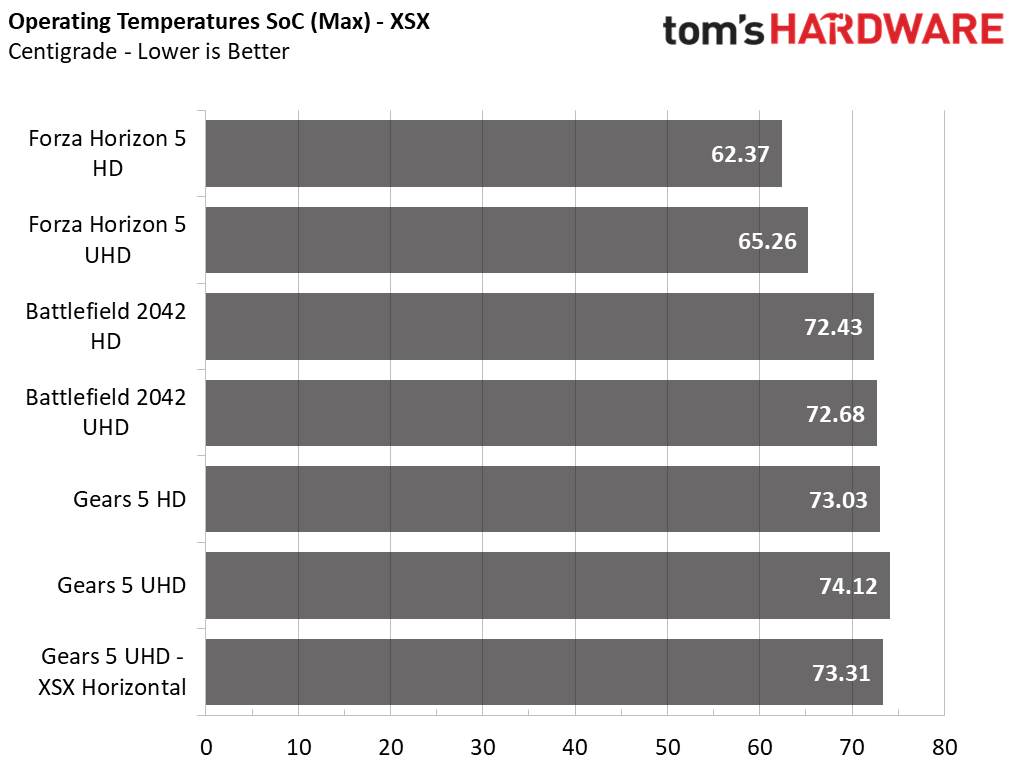
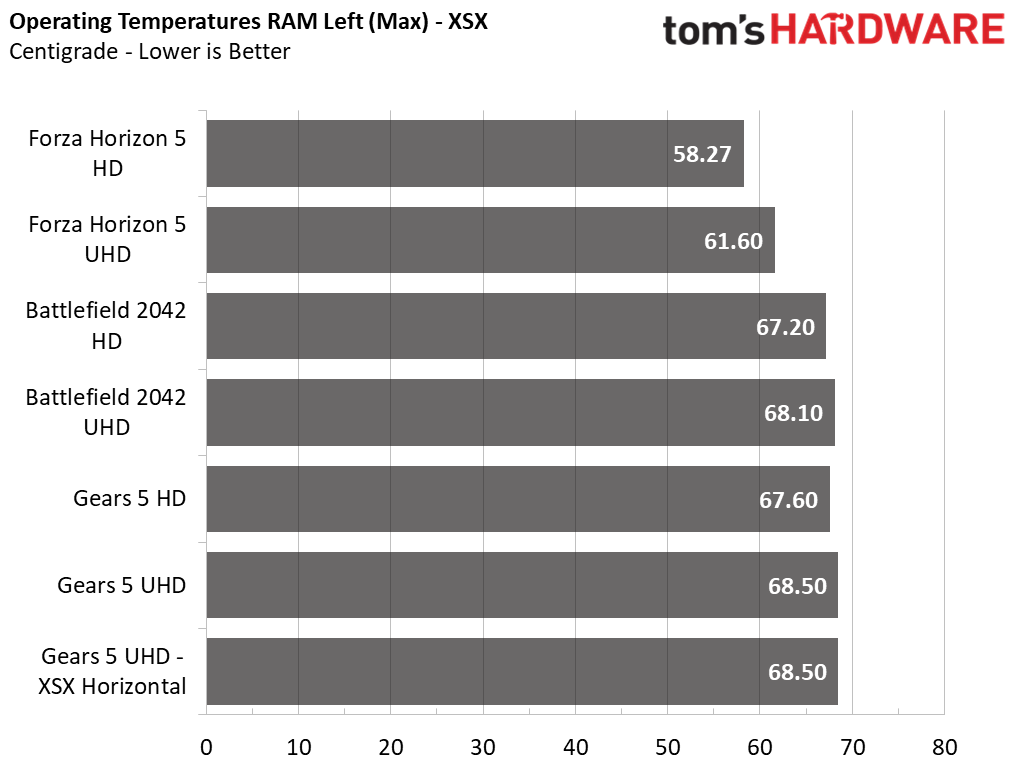
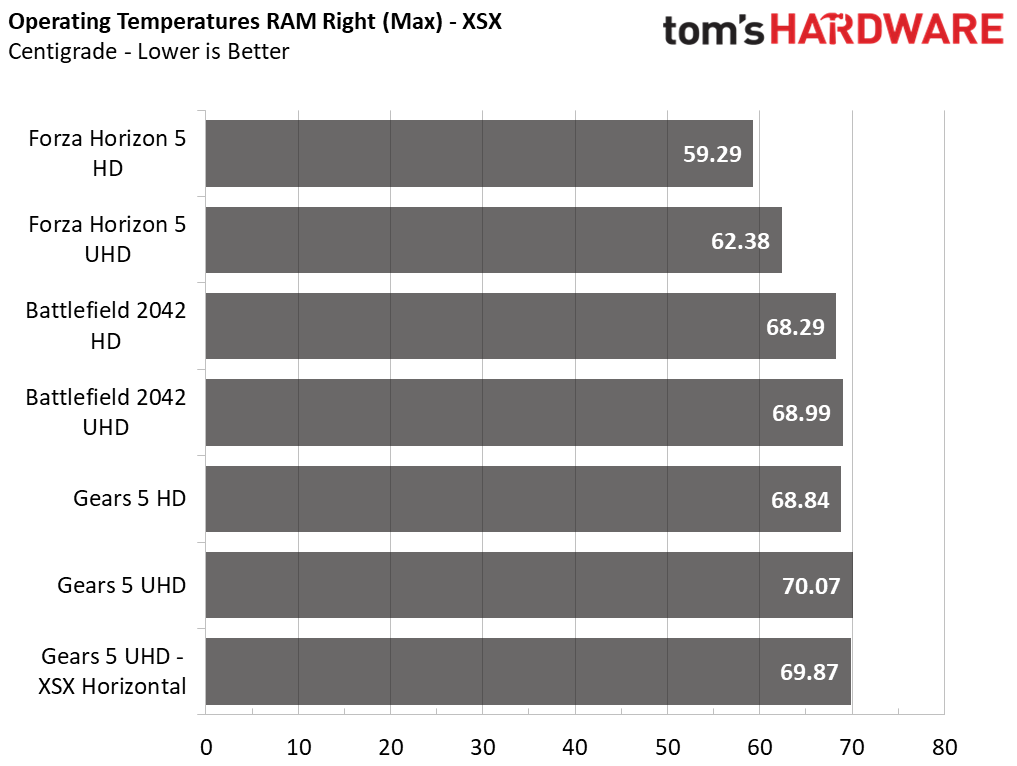
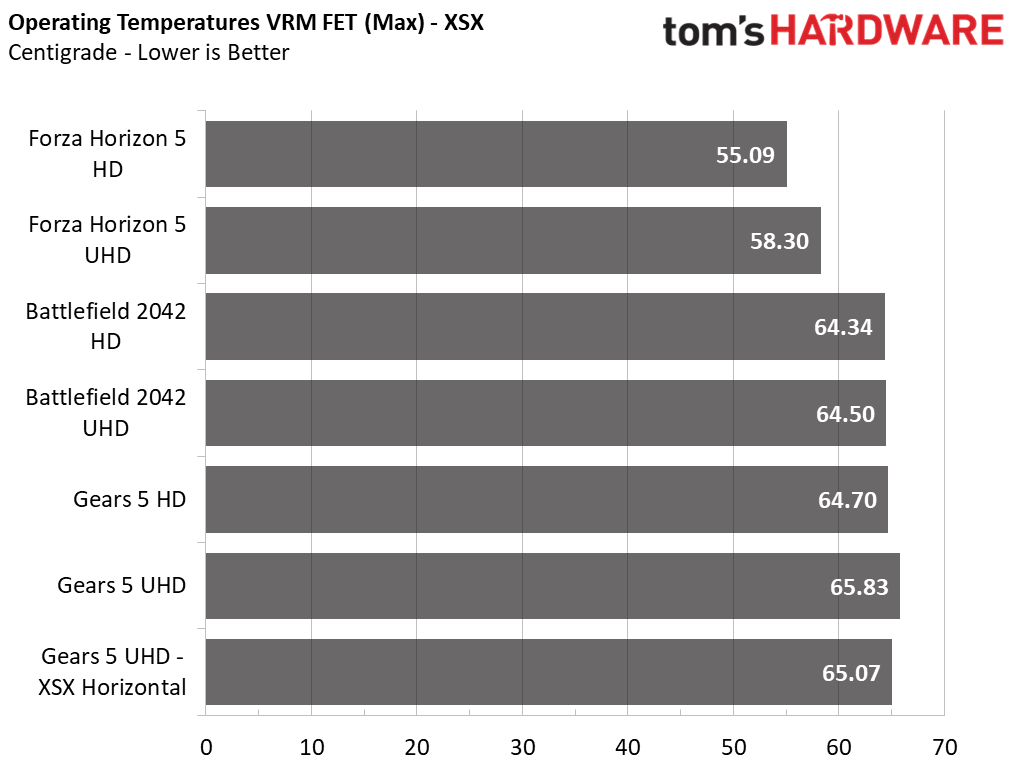
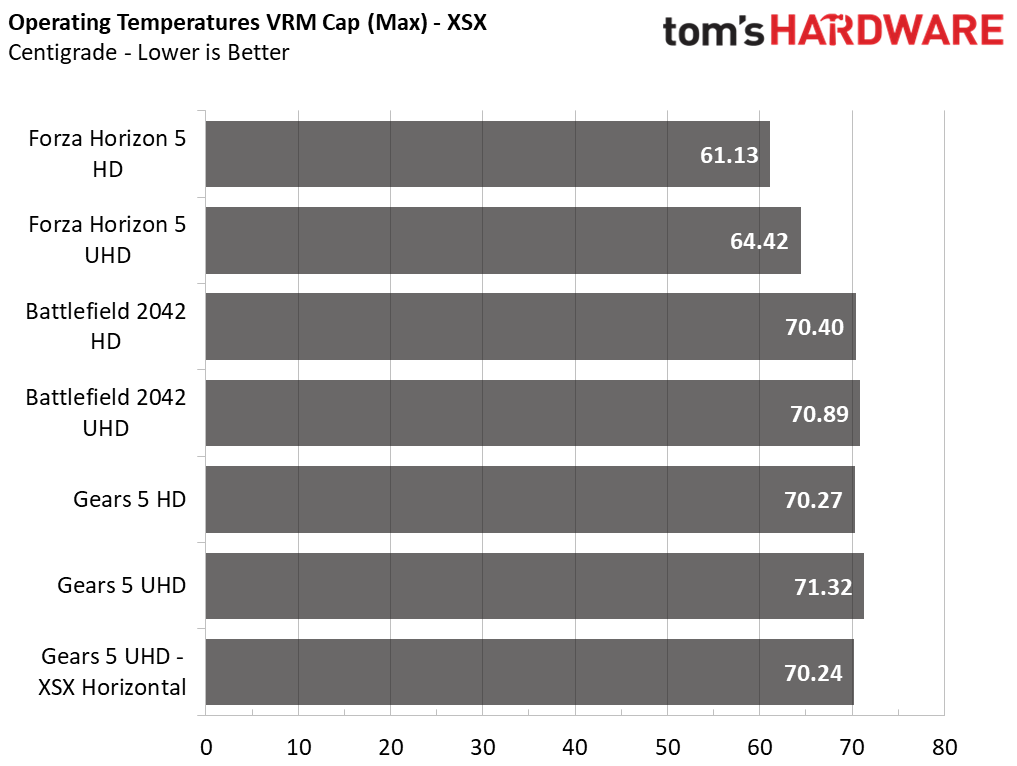
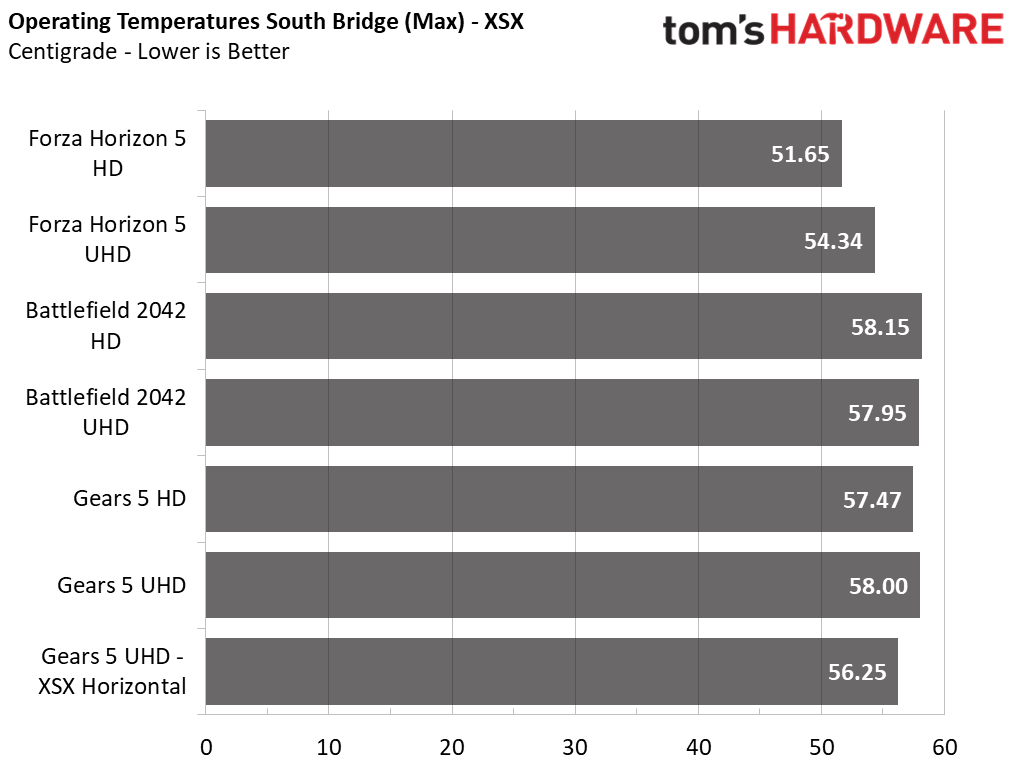
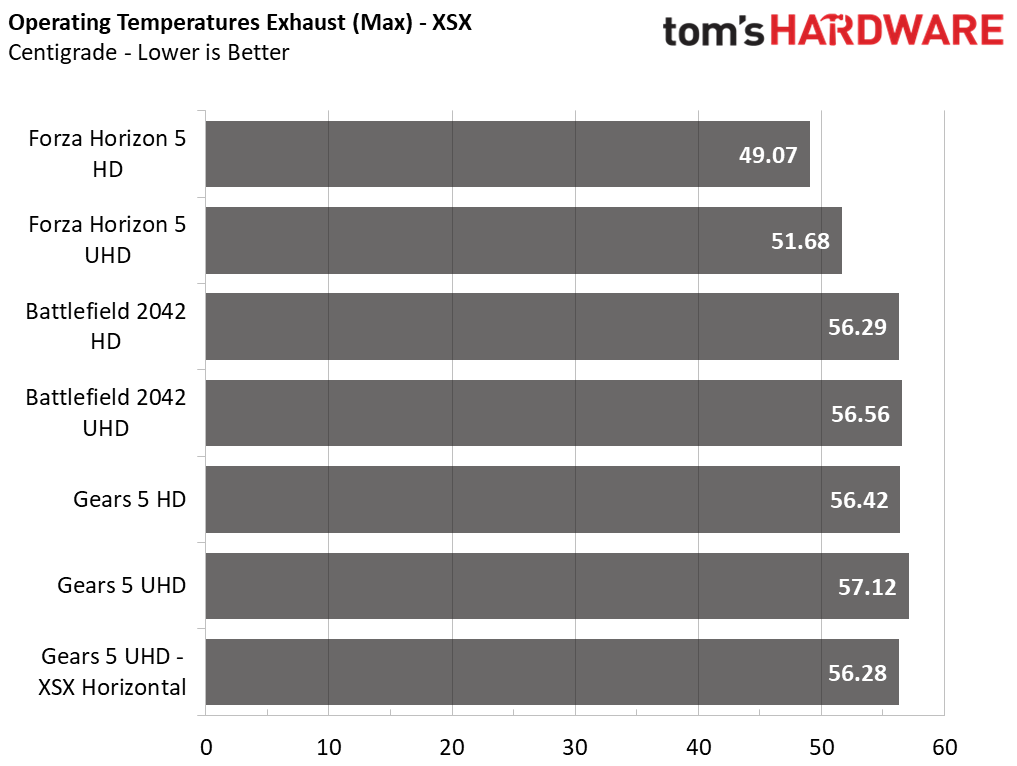

Since Gears 5 requires more energy, it pushes the console more, so the APU reaches 74 degrees Celsius. The temperatures in the rest parts are relatively low, with the next hottest part being one of the VRM caps, which have a high tolerance for heat.
With the console installed on the side, the APU temperature drops slightly, while power consumption is higher. This means that the APU runs at higher speeds because of the more-efficient cooling.
The APU on the Xbox runs hotter, despite the lower power consumption and the lower ambient temperature during our tests, primarily because of the more relaxed fan speed profile and secondly because it uses plain thermal paste, while the PS5 uses a more exotic solution, liquid metal.
We cannot have a 100% fair comparison between the cooling systems of each console, but the outcome of these tests shows that both are highly capable of managing to keep operating temperatures low on all parts without requiring strong airflow, and this is what matters the most.
Conclusion
The Xbox Series X and the PS5 use a custom AMD Zen 2 SoC, with 8 cores and 16 threads. On the PS5, the maximum clock is 3.5 GHz, while the Xbox tops at 3.8 GHz. The Xbox Series X also has a more potent GPU with 52 Compute units, which run at lower speeds than the PS5's CUs, achieving more teraflops.
The Xbox seems to be more power-efficient; the PSU plays an important role here. Speaking of PSUs, the Xbox has a smaller unit that runs at 315W, while the PS5 uses a Delta-made PSU that can deliver up to 372W with 12V output.
In general, we measured lower power consumption on the Xbox, but someone could argue here that we should use the same games to verify this. Nonetheless, even if we used the same games, nothing could ensure that the code is equally optimized. In any case, this is why we ran several games on the XSX for power measurements, and we took the highest results, which we compared with the ones from the PS5.
The bottom line is that the Xbox Series X runs hotter on its SoC, but it makes notably less noise and it has smaller dimensions. The RAM runs cooler on the Xbox as well. Finally, in our tests, putting the Xbox on the side allowed for lower temperatures and power consumption increased, a sign that the APU was running at higher speeds.

Aris Mpitziopoulos is a contributing editor at Tom's Hardware, covering PSUs.
-
popatim In my cousins case, the Xbox stays much cooler; it's always off as he games away on the PS5. LoLReply -
VforV Reply
:ROFLMAO: +1popatim said:In my cousins case, the Xbox stays much cooler; it's always off as he games away on the PS5. LoL -
Heat_Fan89 None of this really matters. I have an original XBOX One that's been thru hell and back and is still running. The same goes for my PS4 Pro. I have a PS3 Slim that I purchased in 2008 that has no issues. I also have an XBOX 360 Slim that I purchased on release day in 2010, also going strong.Reply
The bottom line is these machines are built to last and will probably still be working when the new generation of consoles arrive in another 6 yrs. -
elementalRealms ummm which one runs cooler ? does not matter .. the games run without problems and both consoles are fine per acceptable specs .Reply -
watzupken Having used a PS3, PS4 and also an Xbox Series X, I have to say the noise level from the Xbox is impressive when the consoles are under load. Just as the reviewer mentioned, I can barely hear anything even when gaming on the XBSX for hours.Reply
As to the SOC running hotter on the Xbox, I think it should not come as a surprise since it is a beefier chip to begin with, as compared to the SOC used in the PS5. The PS5 SOC is clocked faster, but depending on the game, it is hard to tell if it is running at full speed or not. DMC5 is not exactly a next gen game and on the PC, you can easily run the game at 60 FPS with a lower mid range GPU. You can push it by enabling RT, but I believe that caps the game at 1080p on the PS5. So again, you gain some eye candy while pushing the SOC, but also at the same time, relaxes the SOC because of the lower resolution. If possible, I think it would be great to test a similar game(s) for a like for like comparison. In any case, thank you for the review. It is good to see some numbers, rather than guessing. -
d0x360 Reply
I hope he's playing now or he's missing out big time. Forza is amazing.. 4k60 with VRR. Also amazing dialed up to 11 on PC at 4k120.popatim said:In my cousins case, the Xbox stays much cooler; it's always off as he games away on the PS5. LoL
Then you have Halo Infinite MP which is very nice so far despite some growing pains.
I have it on good authority that campaign is just excellent. The wait is getting painful.
Gaming in Dolby Vision with Atmos... Mmm so nice. The Atmos headphones are good too.
Plus gamepass... It's an amazing experience..
I gotta say I crazy excited about God of War on PC. I want Sony to keep them coming so I don't have to buy a ps5 but.. I'm gonna end up with one eventually and hopefully sooner...right now all I care about is ratchet and clank. Yeah other late gen PS4 games at 60 would be nice and more Spiderman is ok but not worth trying to hunt one down. Sony usually pulls through on first party so I know good stuff is coming soon. There's good stuff everywhere. -
Reply
My series X stays cool as a cucumber. Even when running cyber punk or other very demanding games. I never hear a sound From the fan. I can’t compare to my PS five because I can’t find a PS five to buypopatim said:In my cousins case, the Xbox stays much cooler; it's always off as he games away on the PS5. LoL -
Scmiles I take it he must of only just got a PS5 as it only has a few games not on Xbox and they are single player games that can all be finished in a week, I suppose there is Xbox game studios Deathloop on there which has Multiplayer.Reply
Forza Horizon 5, MS Flight Sim, Halo Multiplayer are keeping me busy on the Series X whilst it still has Halo campaign, The Gunk etc still to come this month and all are on Gamepass day one. -
sizzling So both operate with perfectly acceptable temperatures and very low noise levels that are not causing any problems. Bottom line nothing in the article is a point to consider in a buying decision.Reply
